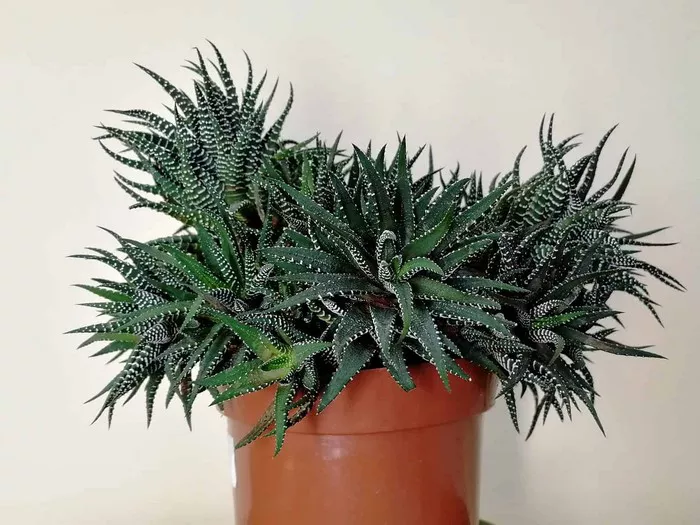Zebra succulents, scientifically known as Haworthiopsis attenuata or Haworthia fasciata, are striking plants prized for their distinctive zebra-like stripes and low maintenance requirements. These succulents are native to South Africa and belong to the Asphodelaceae family. Due to their unique appearance and ease of care, they have become popular additions to indoor gardens, offices, and succulent collections worldwide. However, one common question among zebra succulent owners is: How often should I water my zebra succulent? Understanding the watering needs of these plants is crucial for their health and longevity.
Understanding Zebra Succulents
Before delving into the watering requirements of zebra succulents, it’s essential to understand their natural habitat and physiological characteristics. Zebra succulents typically grow in arid regions with sandy or rocky soil that drains quickly. In their native environment, these plants are accustomed to receiving infrequent rainfall, and they have adapted mechanisms to store water in their fleshy leaves, stems, or roots during periods of drought.
The leaves of zebra succulents are thick and fleshy, with a distinctive pattern of white stripes or tubercles that resemble the stripes of a zebra, hence the name. These leaves serve as water reservoirs, allowing the plant to survive extended periods without rainfall. Additionally, zebra succulents have shallow root systems that spread horizontally near the soil surface, enabling them to absorb moisture efficiently when it’s available.
Factors Influencing Watering Frequency
Several factors influence how often you should water your zebra succulent. Understanding these factors will help you develop a watering schedule that meets the plant’s needs while preventing overwatering, which can be detrimental to succulents.
Environmental Conditions: The environment in which your zebra succulent is located plays a significant role in determining its watering needs. Factors such as temperature, humidity, and sunlight intensity affect how quickly the soil dries out. In warm, dry climates, zebra succulents may require more frequent watering than those in cooler, more humid environments.
Seasonal Changes: Watering requirements for zebra succulents can vary seasonally. During the active growing season, typically in spring and summer, when the plant is actively producing new leaves, it may require more frequent watering to support growth. In contrast, during the dormant period in fall and winter, when growth slows down, watering should be reduced to prevent waterlogged soil and root rot.
Pot Size and Soil Type: The size of the pot and the type of soil used can influence how quickly the soil dries out. Zebra succulents thrive in well-draining soil mixes specifically formulated for succulents and cacti. Potting your zebra succulent in a container with drainage holes ensures excess water can escape, reducing the risk of root rot.
Plant Size and Health: Larger, more established zebra succulents may require less frequent watering than smaller, newly planted ones. Additionally, the overall health of the plant can impact its water requirements. Healthy zebra succulents with robust root systems are better equipped to withstand periods of drought than stressed or diseased plants.
Watering Method: The method used to water your zebra succulent can also affect how often you should water it. Watering from the bottom, where the roots can absorb moisture as needed, is often preferable to overhead watering, which can lead to water sitting in the rosette of leaves and potentially causing rot.
Developing a Watering Schedule
Based on the factors mentioned above, developing a watering schedule for your zebra succulent involves careful observation and adjustment over time. Here are some general guidelines to help you determine how often to water your plant:
Check the Soil Moisture: Before watering your zebra succulent, always check the moisture level of the soil. Insert your finger into the soil up to the first knuckle. If the soil feels dry to the touch, it’s time to water. If it still feels damp, hold off on watering and check again in a few days.
Water Sparingly: Zebra succulents prefer to be underwatered rather than overwatered. Err on the side of caution and water sparingly, allowing the soil to dry out between waterings. Remember, it’s easier to correct underwatering than overwatering, which can quickly lead to root rot and other problems.
Observe Leaf Appearance: Pay attention to the appearance of the leaves on your zebra succulent. Over time, you’ll become familiar with how they look when the plant is adequately hydrated versus when it needs water. Wrinkled or shriveled leaves are a sign of dehydration, while soft, mushy leaves may indicate overwatering.
Adjust for Seasonal Changes: As mentioned earlier, adjust your watering frequency based on seasonal changes in temperature and daylight hours. During the summer months, when temperatures are higher and evaporation rates increase, you may need to water more frequently. In winter, reduce watering to prevent waterlogged soil and cold damage to the roots.
Monitor Plant Growth: Keep an eye on how your zebra succulent responds to your watering routine. Healthy growth and vibrant leaf color are indicators that your watering schedule is on the right track. If you notice signs of stress such as yellowing or browning leaves, adjust your watering frequency accordingly.
Conclusion
Determining how often to water your zebra succulent requires a combination of careful observation, knowledge of the plant’s natural habitat, and an understanding of the factors that influence its water requirements. By considering environmental conditions, seasonal changes, pot size, soil type, and plant health, you can develop a watering schedule that promotes optimal growth and prevents issues such as overwatering and root rot. Remember to water sparingly, allow the soil to dry out between waterings, and adjust your routine as needed based on the specific needs of your zebra succulent. With proper care and attention, your zebra succulent will thrive and continue to delight with its striking appearance for years to come


